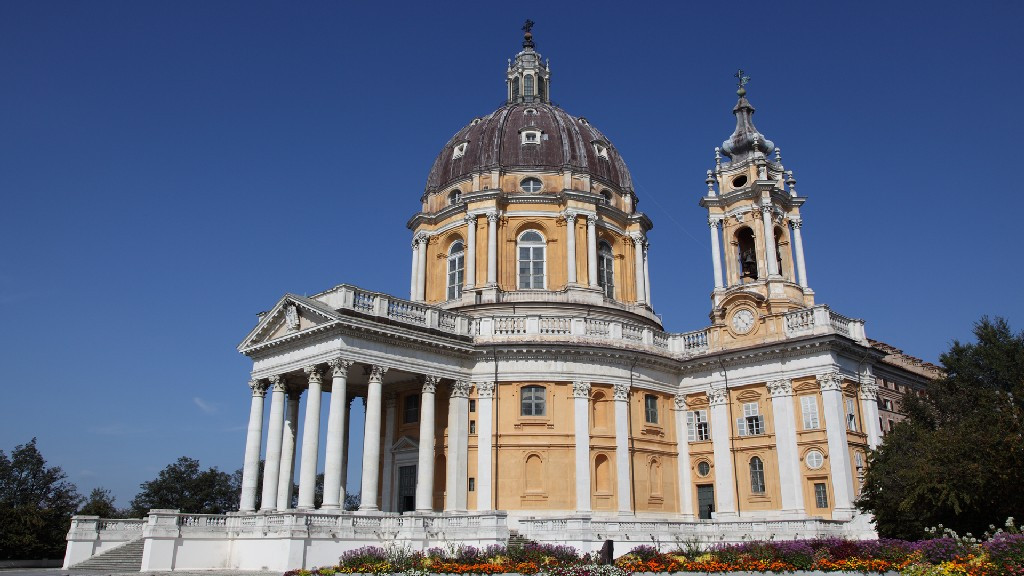 Suburbs; Basilica di Superga and the Stupinigi Palace
Suburbs; Basilica di Superga and the Stupinigi Palace
South of the river there are quite neglected suburbs, and behind them in the wooded hills, luxurious villas of Turin industrialists, m.in. Gianni Agnellego. Bus # 70 brings tourists to the Parco della Rimembranza, where they were seated to commemorate the Turin victims of World War I. 10 thousand trees, over which towers gigantic, Victory Statue flashing with lights. You can also enjoy great views from here, te same, which please the eyes of the city's financial elite.
A separate trip might target the rich baroque Basilica di Superga, in front of which, against the background of the Alps, there is a beautiful panorama of the city. Basilica, like many other places in Turin, it was erected by Filippo Juvara high on a hill above the city. This location is explained by its history. In the year 1706 King Victor Amadeus climbed this hill, to better see the positions of the combined Franco-Spanish army, for four months besieging the city. He made a vow here, that if Madonna would help him in the coming battle, he will build a temple in her honor. Because Turin has survived, the king immediately ordered the top of the hill to be leveled, hired Juvara, and over the next 25 years it was round here, the basilica visible today. An elegant dome, supported by two rows of white columns, rises above the classicist façade, cut with windows and surrounded by turrets with oval finials. The most striking feature of the basilica, however, is the engraving( at the beginning of this century) on her inner name columns.
Many Turinians don't come here for that, to honor the Virgin Mary, nor to see the magnificent mausoleums of the Savoy, but after that, to visit the grave of the entire Torino soccer team. She died tragically in a plane crash, which in the year 1949 it crashed on the side of the mountain. Even today, watching the Torino-Juventus game, you can hear the sinister, the slogan "Superga, superga”.
Another Turin attraction is located behind the gloomy Mirafiori estate, built for the workers of the Fiat factory. It is the luxurious hunting palace of the Savoy family of La Palazzina di Caccia di Stupinigi (lato 10.00-11.50 i 15.00-17.20; winter 10.00-11.50i 14.00-16.20; closed. Pn. i pt.; 3000Accessible by bus #41 z Corso Vittorio Emanuele). The palace was built in 30. XVIII w. and is perhaps Juvara's greatest creation, harmoniously combining symmetry with fantasy. It also has numerous rococo decorative elements
From the outside, the palace is rather neglected, but inside, the original luxurious appearance is kept. The most extravagant room, oval Salone Centrale, it is a stunning triumph of illusionism, combining elements of realism and fantasy in a wonderful trompe l'oeil (optical illusion in painting). Other rooms are decorated with hunting motifs: on the vaults is depicted in the bath Diana, goddess of hunters.
The walls are decorated with hunting scenes, and the chapel was consecrated to St.. Hubert, the patron saint of hunters. The walls are full of rich decorations everywhere: glitter, hand painted silk, and delicately ink-coated rice paper.
There is also a lot of delicate 18th-century furniture, m.in. gilded four-poster beds, inlaid desks and sideboards, there is even a magnificent marble bath decorated with a relief of the imperial eagle (posted here by Paulina Bonaparte).